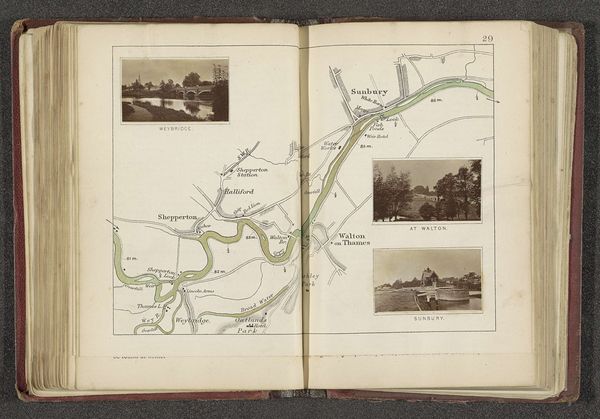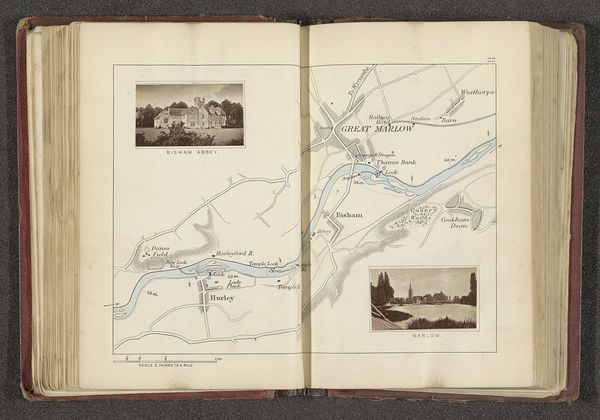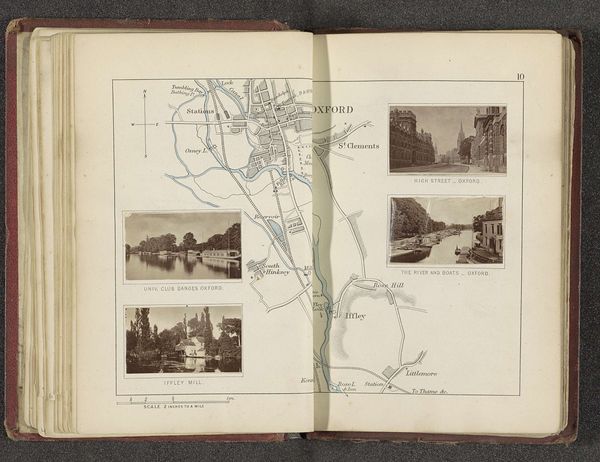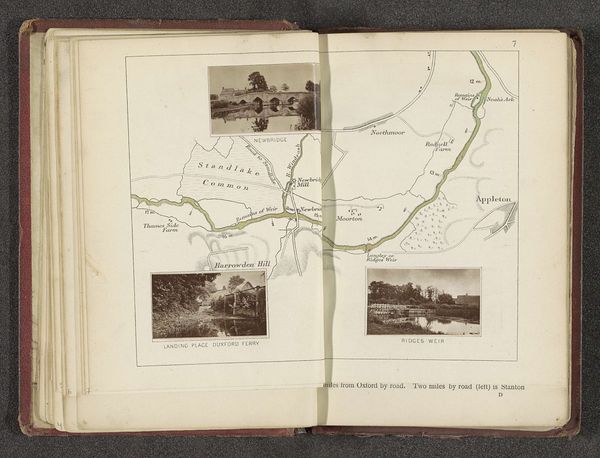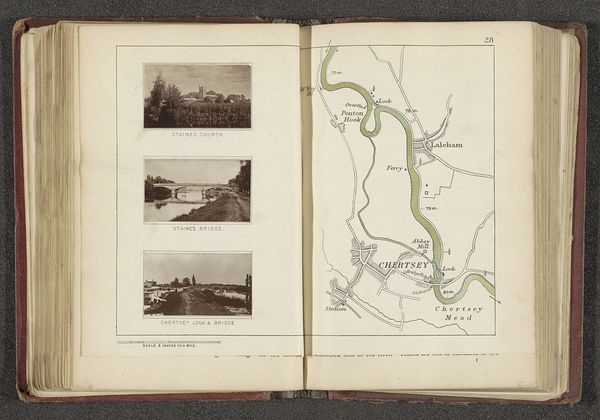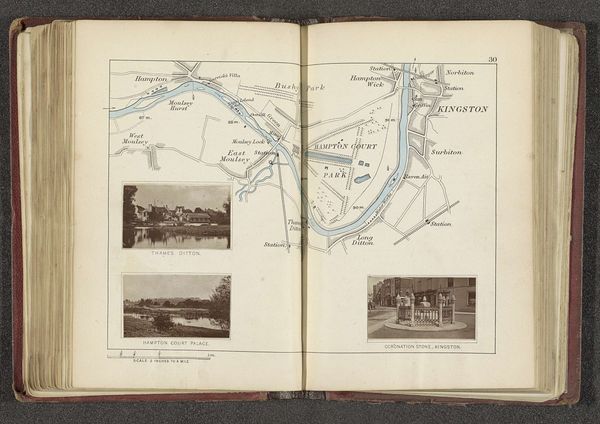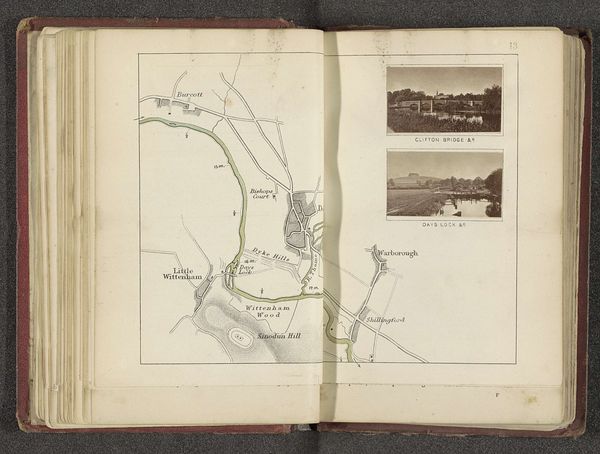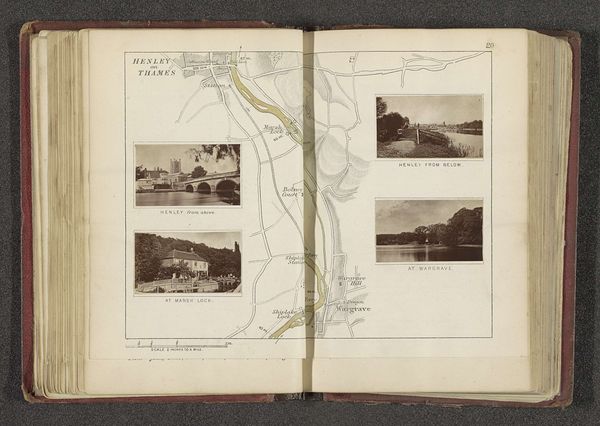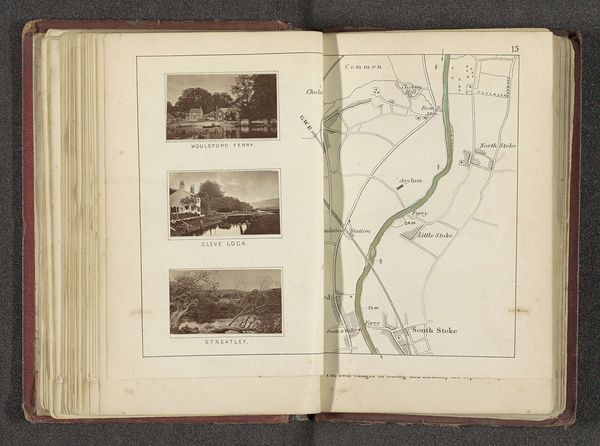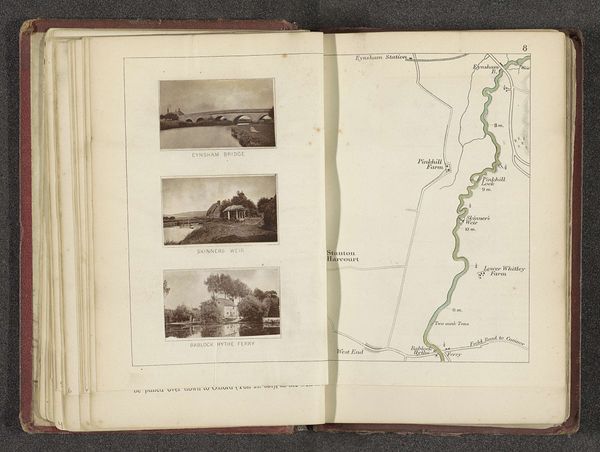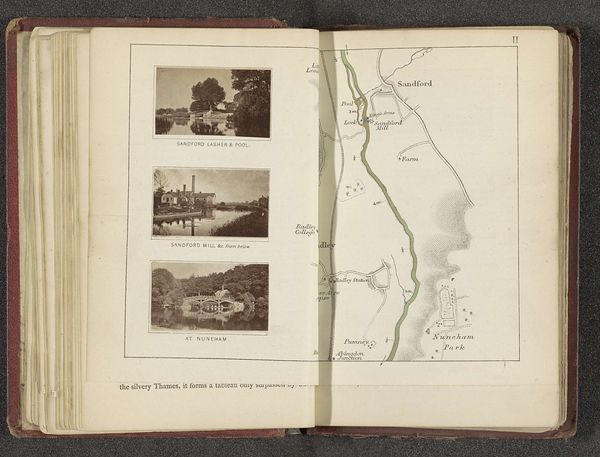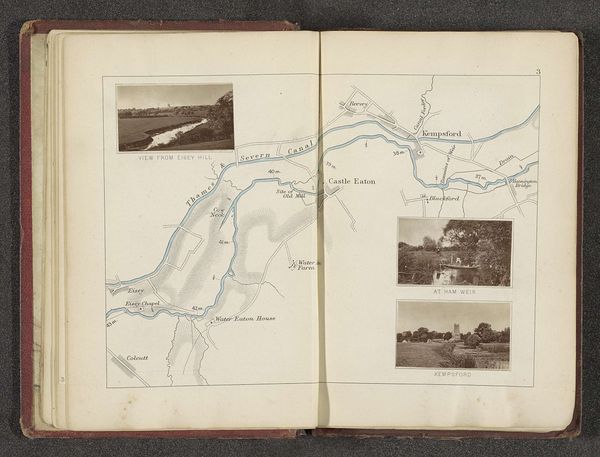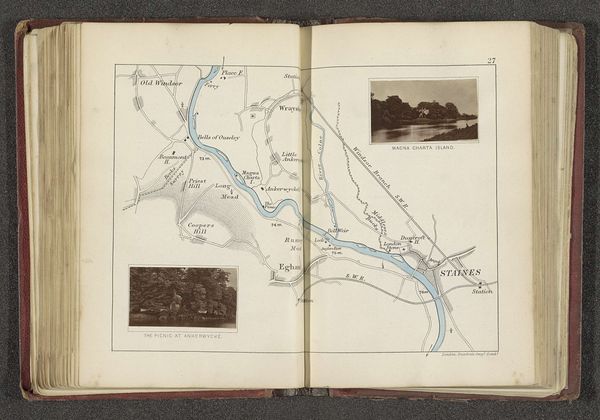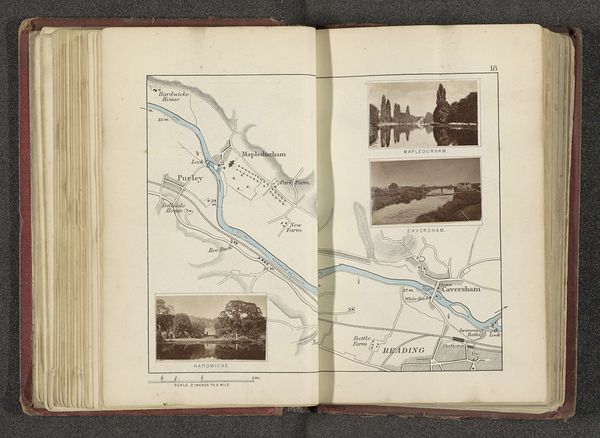
print, photography, albumen-print
# print
#
landscape
#
photography
#
coloured pencil
#
orientalism
#
cityscape
#
watercolor
#
albumen-print
Dimensions: height 182 mm, width 235 mm
Copyright: Rijks Museum: Open Domain
Editor: This is an intriguing combination. It's "Kaart met drie afbeeldingen van plaatsen langs de Theems," or "Map with three images of places along the Thames," created before 1879 by Henry W. Taunt. It includes albumen prints, but also something that resembles coloured pencil and watercolour. The juxtaposition of a clearly utilitarian map with these serene photographic images is quite striking. How do you interpret this work, particularly considering the range of materials used? Curator: It's precisely this range of materials and its reproduction via photographic print that fascinates me. Let’s consider the production of these images. Albumen prints, very popular at the time, were created using a labor-intensive process. Think about the process involving egg whites, chemicals, sunlight—quite the feat of material transformation to yield a reproducible image. Does the seemingly objective rendering of the Thames, contrasted with the cartographic representation of ownership and utility, offer an insight into how land was conceptualized and consumed during that era? Editor: That’s interesting. So, the material process itself speaks to a deeper cultural context? It's not just about the final image, but about the act of making, of transforming raw materials into something that represents place. Curator: Exactly. Furthermore, consider how photography as a relatively new technology impacted other modes of visual representation, even maps. Taunt isn't just presenting locations, but actively framing them through a specific medium tied to particular social and economic conditions of the period. What sort of access did the middle classes have to these images versus the lower classes? Editor: I hadn't thought about the implications of image access and consumption at that time. It makes you wonder about who the intended audience was, and what kind of relationship they had with these places along the Thames. Thanks, I have a lot to think about. Curator: And I find myself thinking again about the presumed objective of the photographic and cartographic images versus the artistic treatment.
Comments
No comments
Be the first to comment and join the conversation on the ultimate creative platform.
